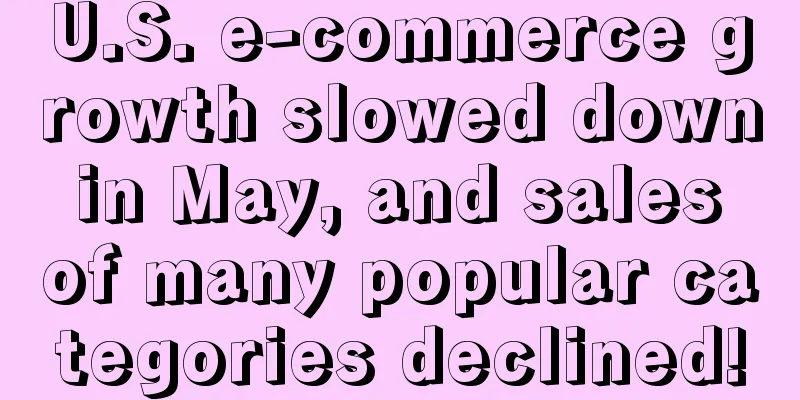Several common malicious operations of Amazon's competitors and how to deal with them

|
More and more malicious Amazon sellers are abusing the system to bring down their competitors. This article will explain how legitimate sellers can detect scams and what countermeasures they can take. We all know that Amazon is a highly competitive platform, and sellers use various methods to promote sales growth. If sellers want to win the Buy Box, they usually need to have a lower price, maintain good performance, and use FBA. But some sellers will take other measures and try to bring down their competitors with a series of dirty tricks. Their goal is simple: to get the competitor’s seller account or listing suspended. 01 Change the pictureThis is very insidious because Amazon will not notify other sellers if the product images are changed, which provides an opportunity for bad sellers and the consequences are very serious. First, manufacturers will constantly change product packaging, so there may be many different packaging on the shelf, but these products all have the same UPC code and the products inside the packaging are the same. In this case, the best way is to add a description and picture of the product packaging, and strictly follow Amazon's process to complete this step, because Amazon needs relevant evidence. Secondly, because different models of a product have the same UPC code, no matter who created the product listing first, other sellers can change the image on the listing and replace it with a different product model. Even if you can restore it through the Seller Central appeal, other sellers can still change it again. To avoid this, you should create listings with different product models, purchase your own UPC codes, or add other models of the product to your listing. Finally, another despicable behavior is to replace the product image with a completely different product. However, Amazon keeps a record of every listing change, and if the victim files a complaint, the perpetrator will be punished for violating the rules. Countermeasures: Customer reviews are a good way to discover this problem. If there are complaints such as "not as described", "not as advertised" or other similar complaints in the reviews, you should immediately check your listing and temporarily close it until you are sure that your product description is exactly the same as the product you are selling. Check your listing to see if there are other packaging pictures, and examine your listing from the customer's perspective, rather than relying solely on the UPC code. Note: The best way to guard against this conspiracy is to check your negative feedback and reviews and respond immediately, temporarily close your listing, find out the cause of the problem, and if the product images have been drastically changed and it is obviously a malicious frame-up, do not hesitate to file a violation complaint with Amazon. 02 Change product categoryA competitor may pull your product into their own product category, but in fact your product does not belong to that category, and your account may be frozen. But Amazon's existing "Other Categories" service will help the victimized sellers defeat this conspiracy. Another way to implement this trick is to create a new listing in an existing category to sell your product, so there will be multiple different listings for the same product, but this is not in line with Amazon's rules. Amazon will merge various ASINs into one, so that everyone can be satisfied. What to do: File an appeal, be patient, and make your suspicion known to Amazon if someone deliberately alters your product images. Note: You can’t always win, the process involves all the appeals, and if the service staff is experienced, you may get the result you want. 03 Negative feedback or malicious slander in buyer informationCompetitors may deliberately buy your products and leave negative feedback, accusing you of selling fake or defective products. They complain to Amazon and attack you fiercely. In fact, Amazon does not care what they say, but their words will trigger Amazon's automatic processing system, and you will get a warning or your account will be directly frozen by Amazon. Countermeasures: Pay attention to negative reviews and feedback about your products, check your reports regularly, respond to negative reviews in a timely manner and take appropriate measures. Note: Sometimes unscrupulous sellers will buy the product themselves and then leave a bad review, which makes it very easy to expose their scheme and prevent them from framing you again. However, some sellers will let their friends and family do this for them. In this case, it is very difficult to find the mastermind behind the scenes. 04 Breaking the rulesYour competitor complained that you violated Amazon's rules, resulting in Amazon sending a vague notification that a customer complained about you, but you did not find any negative reviews or complaints about the product. In this case, this complaint without any evidence is often the only evidence that your competitor made a malicious complaint. Even if you did not do these things, Amazon often stands on the other side because malicious sellers provide so-called evidence. Malicious follow-selling, product infringement, fixed prices, etc., any one of which may cause your account to be frozen, or even never unblocked. What to do: If you suspect someone is maliciously framing you, try to find out who is behind it. Generally speaking, they have all purchased your products, and the best way is to keep the invoice. In addition, order from suppliers who provide formal receipts, which can reduce the chance of being victimized. For infringement issues, try to handle them properly. If it is a legitimate complaint, the rights owner will at least respond to you and tell you what to do next. Once they get a satisfactory result, you can regain the right to sell. Note: Amazon workers may not be as thoughtful as you are, and what is obvious to you may not be so obvious to them, so try not to get into an argument and just explain how you were framed. 05 Goods not received/damaged during transportation/delayed deliveryThis may be done intentionally by the buyer in order to get the product for free, or it may be done maliciously by the seller in order to frame a competitor who uses MFN (Merchant Fulfillment). If you use MFN, you can easily have your account frozen due to performance issues. Many sellers use USPS, and the chances of being framed are higher. If your product is lost during transportation, there is little chance of recovery, and it is difficult to find out where it was lost. If the customer says they have not received the goods, do not ask them to go to the local express delivery point to find it, because this is likely to cause the customer to leave you a bad review. The best way is to refund them immediately. If you are sure that the other party is a scammer, do not ship to him in the future. If you are a self-shipping seller, the loss or damage of the product during transportation has a great impact on performance indicators. There are only two ways to improve this situation. First, choose a better express delivery partner, and second, purchase business insurance. Once the product is damaged during transportation, you can get corresponding compensation, but this is a considerable expense for most sellers, and it will only work within a small probability range. Countermeasures: The best solution to this problem is to use FBA. Admittedly, FBA fees are higher than MFN, but in the long run, sellers will not lose profits, and sometimes even gain more. In addition, using FBA can save time and energy, and provide opportunities for sellers to handle other matters. In addition, by releasing permissions and allowing Amazon to automatically handle return/refund business, the business process is streamlined, and customers receive convenient services, which effectively reduces the number of dissatisfied customers, thereby reducing the number of potential negative reviews and improving performance indicators. Note: Every customer inquiry counts against you, because any reason that leads to a customer contacting you will cause the order to be considered a "defective order." The more difficult it is for a customer to return or exchange an item, the higher the chances of you getting sued for the same order. A-to-Z claims, returns, customer emails, and refunds can all be used against you by malicious competitors. 06 Multiple returns/negative feedback received in one dayAmazon does not allow multiple returns, inquiries, or negative feedback for the same product in one day. Once this happens, the seller’s listing will be restricted at best, and the account will be restricted at worst. A malicious seller can buy several products from you at the same time, and then return them all a day later for reasons such as "defective", "counterfeit", "not as described", etc. Amazon will not treat it as three products from the same order, but as three returns of the same product in one day. Countermeasures: There is no better way than to strictly control various data. If you control negative feedback within 3%, ODR (order defect rate) within 1%, and return rate within 1%, this trick will not have much impact on you. Note: Amazon will not take immediate action against you for negative feedback. ODR data is based on sales indicators within 90 days. If you can remove the negative feedback within a week of it happening, there will be no impact. When the account is not frozen, it is the best time to remove negative feedback. For this, you can use Amazon's automatic processing system to serve you. 07 False return reasonsGenerally speaking, this is not a single tactic, but a series of suppressions - multiple returns, negative feedback, and violations of regulations. Malicious sellers may ask for returns with various false reasons such as "not as described" or "defective" and then proceed to the next step. If it is just a dishonest buyer, they will not suppress you with negative feedback or multiple returns. So, if you are hit by such a chain of tactics, perhaps you are attacked by a malicious seller. What to do: In your action plan, explain to Amazon the cause of the problem, indicating that the customer is lying or your peers are maliciously framing you. In addition, it is also helpful to check the return report regularly. Note: If you are being blackmailed and extorted by a customer, tell Amazon. In addition, buyers have a time limit for free returns, and once this time limit is reached, they are no longer eligible for free returns. In fact, Amazon knows that some bad buyers abuse their policies, and they will not let them get away with it forever. If you can prove that the buyer is evasive in order to get free returns, Amazon will pay attention to the buyer's account. 08 Buy out the inventoryMalicious competitors may purchase large quantities of your inventory or even buy out your inventory, and then return a large number or all of it around the return deadline, claiming that the product is inferior. In this way, you may get into trouble for returning too many products or violating the rules, and your inventory may not be used again for a month or more. During the period when your inventory is bought out, malicious sellers are likely to use your listing to resell the product, or sell it on other platforms such as eBay. Products that are not sold within a month will be returned to you due to various quality issues. In this way, they make a profit from the products they sell and get back the principal from the products returned to you. Countermeasures: Pay attention to large orders of products. If the buyer comes to you for various reasons after 30 days, explain the situation to Amazon. If they apply for a return within 30 days, agree to their request immediately, but don’t give up. Tell Amazon that you suspect that bad competitors have framed you. If necessary, provide invoices to prove that the products you sold are brand new. Tell Amazon that you are concerned that each returned product of the same product is treated as a separate return case. Ask them to investigate whether the buyer is a third-party seller or someone closely related to a third-party seller. Note: These matters involve sensitive terms such as "large number of returns", "counterfeit products", "defective products", etc., which can easily lead to immediate account suspension, account review, or Amazon's automatically generated emails asking you to write an action plan for these issues. Amazon likes proactive sellers, and if you express your suspicions to them, they won’t tell you what they found, but once it is proven that what you say is true, malicious sellers will be warned and punished for manipulating the platform. |
<<: Amazon Practical Information (I)
>>: Amazon’s internal logic for capturing reviews
Recommend
If you started Amazon in 2014, would you be successful?
Many people who graduated from second-tier and th...
Amazon Advertising Underlying Logic + Optimization Strategy
What I want to share with you today is the underly...
Amazon and Affirm expand partnership! Affirm will embed Amazon Pay as a payment option!
It is learned that US payment giant Affirm announc...
TikTok marketing is all the rage in the fashion industry! It may become the next growth engine for fashion e-commerce
<span data-shimo-docs="[[20," ","...
More than 400 million counterfeit products were found on seven major platforms including Amazon and Walmart!
<span data-shimo-docs="[[20,"获悉,根据美国专业打假机构...
What is TouchSite? TouchSite Review
TouchSite is a good helper for independent website...
The race to beat Amazon! Fall Prime is in trouble
In the past two days, Amazon announced the officia...
Insights into the US beauty products market: 5 trends to watch out for in 2023!
According to the latest research from eMarketer, d...
How do Amazon sellers create their own private label products?
Close your eyes and think about what kind of e-co...
How to promote Amazon outside the site?
Many friends who have just started to do Amazon b...
Amazon misjudged pesticide solution
In this period Friends who have been misjudged as...
Amazon's most powerful weapon! Sellers use 12315+12345 to completely drive away copycats!
The most feared thing for those who do business on...
Product development should be adapted to local conditions: At the current stage, how can we improve the success rate of product selection?
Chen Yinbing1 My C position A netizen sent me a We...
USPS postpones implementation of 2022 non-standard package fees! Relax adjustment review time!
It is learned that according to foreign media repo...
There is a risk of fire! The Canadian Ministry of Health recalls Anker power banks!
It is learned that according to foreign media repo...









